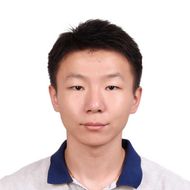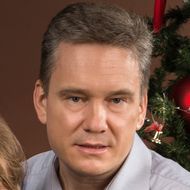Machine Learning Helps Improve Perovskite Solar Cells

A team of researchers from HSE MIEM, LPI RAS, and the University of Southern California have applied machine learning to the analysis of internal defects in perovskite solar cells and proposed ways to improve their energy efficiency. The findings of the study performed on the Cs2AgBiBr6 double perovskite can be used to develop more efficient and durable perovskite-based materials. The paper has been published in the Journal of Physical Chemistry Letters.
Clean, renewable, alternative energy is attracting the attention of both scientists and investors. Over the last 20 years, organic-inorganic perovskites have been a major discovery in the renewables sector. Perovskite – a mineral compound with a specific crystal structure – was first found in 1839 in the Ural Mountains and named after the Russian mineralogist Perovsky. After the introduction of halogen-perovskite solar cells in 2009, their efficiency increased from 3.8% to 25% by 2021. Today, perovskite-based solar cells are competing with more traditional silicon cells.
Perovskite films can be obtained by solution deposition, a simple and inexpensive technology – herein lies their advantage over silicon-based cells and devices which require a complex deposition technique using high-purity silicon on a substrate placed in a vacuum chamber. A major downside of perovskites, however, is that they are prone to degradation when exposed to moisture, atmospheric oxygen, high heat or intense light. Thus, despite some obvious advantages, these compounds are unstable and difficult to work with.
Another issue with perovskites is that lead has been used to improve their efficiency; while making cells more energy efficient, lead is a hazardous toxic substance that requires proper disposal. In fact, the cost of their disposal can exceed the expected benefits from using the cells, and this is the main reason why lead perovskite batteries have never made it to mainstream industrial production.
The challenge today is to discover a compound which is free of toxic lead and unstable organic components but can make highly efficient solar cells. A group of researchers from Russia and the U.S. took up the challenge and examined the properties of Cs2AgBiBr6, a lead-free perovskite.
The compound is a double perovskite that has the formula of A2BB'X6, where A is a large cation (a positively charged ion), B and B' are smaller cations, and X is an anion (negatively charged ion). In this compound, sites B and B' are occupied by Ag and Bi cations. This makes the compound relatively stable, as the risk of the inorganic Cs, Ag and Bi ions reacting with the environment is low. But while Cs2AgBiBr6 is a non-toxic and stable compound, its efficiency is below 3% due to defects in the films.
Such defects can trap photogenerated charges and accelerate their recombination, causing positive and negative particles to collide, annihilate each other and release heat instead of electricity, thus causing a loss of energy efficiency.
In order to find ways to avoid these defects, the researchers examined the process whereby traps acting as charge recombination centres were formed at negatively charged Br vacancies.

Liu Dongyu, research fellow at the MIEM HSE School of Electronic Engineering
‘A bromine (Br) vacancy is the absence of a bromine atom in the Cs2AgBiBr6 lattice. Such defects are the most common ones. Neutral vacancies have little effect on charge loss, but can become traps once they accept electrons and assume a negative charge.’
A large amount of data on defects (tens of thousands of possible configurations) was generated using computer simulations and the application of quantum density functional theory. Since the scale of this data made manual analysis difficult, the researchers used machine learning to determine the movement of atoms leading to trap-assisted charge loss and thus a reduction in the efficiency of solar cells. Based on their findings, the scientists have proposed chemical methods for avoiding the formation of defects in the process of manufacturing the materials.

Andrey Vasenko, Professor at the MIEM HSE School of Electronic Engineering and Deputy Head of the Quantum Nanoelectronics Laboratory
'Machine learning has helped us identify the most important parameters that govern trap-assisted loss (recombination) of charges. Our findings can be used to develop strategies for defect passivation and for manufacturing better materials for perovskite solar cells.'
Andrey Vasenko
Professor, School of Electronic Engineering
Dongyu Liu
Research Fellow, School of Electronic Engineering
See also:
HSE Scientists Optimise Training of Generative Flow Networks
Researchers at the HSE Faculty of Computer Science have optimised the training method for generative flow neural networks to handle unstructured tasks, which could make the search for new drugs more efficient. The results of their work were presented at ICLR 2025, one of the world’s leading conferences on machine learning. The paper is available at Arxiv.org.
Quantity over Quality: How Publication Activity Leads to Crisis
Participants of the 4th Fall into ML conference at HSE University held a discussion titled ‘Academia in Crisis: What Does the Future Hold?’ In particular, they examined why the number of scientific publications continues to grow, what the quality of these papers is, what expectations should be placed on researchers, and what role artificial intelligence plays in preparing academic articles.
Start of a Long Journey: Young HSE Scientists Contribute to Learning Theory at COLT 2025
Participation in high-level international events is crucial for the professional development of researchers starting their career in science. It provides an opportunity to exchange ideas, create promising teams, and make important connections. This summer, Denis Ryapolov and Askar Tsyganov, students of the Applied Mathematics and Computer Science programme and staff of the AI and Digital Sciences Institute at the Faculty of Computer Science of HSE University, attended the prestigious international Conference on Learning Theory, COLT 2025, which was held in Lyon, France. In an interview, they shared their experiences and impressions from the trip.
Analysing Genetic Information Can Help Prevent Complications after Myocardial Infarction
Researchers at HSE University have developed a machine learning (ML) model capable of predicting the risk of complications—major adverse cardiac events—in patients following a myocardial infarction. For the first time, the model incorporates genetic data, enabling a more accurate assessment of the risk of long-term complications. The study has been published in Frontiers in Medicine.
‘We Bring Together the Best Russian Scientists and AI Researchers at HSE University Site’
On October 25–26, 2024, HSE University’s AI and Digital Science Institute and the AI Research Centre hold the Fall into ML 2024 conference in Moscow. This year’s event will focus on the prospects in development of fundamental artificial intelligence, with SBER as its conference title partner.
HSE Researchers Demonstrate Effectiveness of Machine Learning in Forecasting Inflation
Inflation is a key indicator of economic stability, and being able to accurately forecast its levels across regions is crucial for governments, businesses, and households. Tatiana Bukina and Dmitry Kashin at HSE Campus in Perm have found that machine learning techniques outperform traditional econometric models in long-term inflation forecasting. The results of the study focused on several regions in the Privolzhskiy Federal District have been published in HSE Economic Journal.
‘The Goal of the Spring into ML School Is to Unite Young Scientists Engaged in Mathematics of AI’
The AI and Digital Science Institute at the HSE Faculty of Computer Science and Innopolis University organised a week-long programme for students, doctoral students, and young scientists on the application of mathematics in machine learning and artificial intelligence. Fifty participants of Spring into ML attended 24 lectures on machine learning, took part in specific pitch sessions, and completed two mini-courses on diffusion models—a developing area of AI for data generation.
Software for Rapid Detection of Dyslexia Developed in Russia
HSE scientists have developed a software tool for assessing the presence and degree of dyslexia in school students based on their gender, age, school grade, and eye-tracking data. The application is expected to be introduced into clinical practice in 2024. The underlying studies were conducted by specialists in machine learning and neurolinguistics at the HSE AI Research Centre.
‘Every Article on NeurIPS Is Considered a Significant Result’
Staff members of the HSE Faculty of Computer Science will present 12 of their works at the 37th Conference and Workshop on Neural Information Processing Systems (NeurIPS), one of the most significant events in the field of artificial intelligence and machine learning. This year it will be held on December 10–16 in New Orleans (USA).
HSE University Holds HSE Sber ML Hack
On November 17-19, The HSE Faculty of Computer Science, SBER and cloud technology provider Cloud.ru organised HSE Sber ML Hack, a hackathon based around machine learning. More than 350 undergraduate and graduate students from 54 leading Russian universities took part in the competition.


